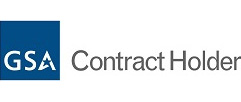Federal and state regulations governing Medicaid services require that each Coordinated Care Organization (CCO) maintains a network of appropriate healthcare providers to ensure adequate access to all services covered under the Medicaid contract. Each CCO must submit documentation to the state Medicaid authority demonstrating its capacity to serve the expected enrollment in its service area in accordance with the state’s standards for access to care.
Delivery System Network (DSN) Evaluation
Exhibit G of the CCO contract outlines the reporting requirements of the CCOs related to providers, cooperative agreements, and hospital adequacy. This activity is focused on DSN reports that each CCO is required to submit to the state each contract year. The DSN Evaluation includes three components:
- The DSN Provider Narrative Report contains information and analysis of how the CCOs ensure, monitor, and evaluate network adequacy, members and membership needs, community coordination, and strategies to address deficiencies.
- The Time and Distance Analysis uses address-level information for all members and providers to evaluate CCO compliance with state-established standards of access to different service categories by driving time and distance.
- The DSN Provider Capacity Report contains information and data related to provider information for key categories of services or types of service providers. In 2021, OHA began conducting the DSN Provider Capacity analysis on a quarterly basis.
HSAG uses information and data derived from these three components to provide OHA with an annual evaluation of network adequacy within the state in an aggregate report, including results for individual CCOs and recommendations to support ongoing monitoring and improvement activities.
Network Adequacy Validation
Network Adequacy Validation (NAV) is designed to assess the accuracy of the state-defined network adequacy indicators reported by coordinated care organizations (CCOs) and to evaluate the collection of provider data, reliability and validity of network adequacy data, and methods used to assess network adequacy, systems and processes used to inform calculation and reporting activities. The validation of Network Adequacy is one of the mandatory EQR activities that the state Medicaid agencies are required to perform as described in CFR §438.350(a). During this activity, HSAG conducts an Information Systems Capability Assessment (ISCA) to review systems, processes, and data sources used to calculate network adequacy standards and conduct interviews with key CCO staff to confirm findings from the documentation review, expanded or clarified outstanding issues, and verified source data and processes used to inform data reliability and validity of network adequacy reporting. HSAG uses the CMS EQR Protocol 4 indicator-specific worksheets to generate a validation rating that reflects HSAG’s overall confidence that the CCOs used an acceptable methodology for all phases of design, data collection, analysis, and interpretation of the network adequacy indicators. HSAG calculates each network adequacy indicator’s validation score by identifying the number of Met and not Met elements. Findings are then compiled and reported to OHA in a single NAV aggregate report and annual Technical Report.
In accordance with CMS’ EQR Protocol 4, OHA contracted with HSAG to evaluate the accuracy and validity of OHA’s calculation of the Network Adequacy Indicators for the 16 CCOs'. The following list describes the type of data collected and how HSAG analyzes the data:
- Information systems underlying network adequacy monitoring: CCOs completes and submits an ISCA for HSAG’s review and uses the responses from the ISCA to assess the ability of the CCOs information systems to collect and report accurate data related to each network adequacy indicator.
- Validate network adequacy logic for calculation of network adequacy indicators: CCOs submit documented code, logic, or manual workflows for each indicator in scope of the NAV validation activities. HSAG reviews logic provided to ensure compliance with the State-defined indicators used to produce plan level calculations.
- Network adequacy source data primary source verification (PSV) and results: PSV is used to further validate the accuracy and integrity of the source data files used to inform network adequacy monitoring and reporting at the indicator level. HSAG assesses the methods, logic, and processes used to confirm accuracy of the data and detect errors. HSAG selects key data elements within each source data output file to confirm that that the primary source system maintained by the CCOs.
- Supporting documentation: HSAG requests documentation that would provide reviewers with additional information to complete the validation process, including policies and procedures, file layouts, system flow diagrams, and data collection process descriptions.
Access and Availability Surveys
OHA contracts with HSAG to perform additional activities to evaluate the quality of provider data and availability of appointments to Medicaid members. These activities include secret- and revealed-shopper surveys, as well as provider directory validations. While surveys can be used to assess both the accuracy of provider directories, provider panel status, and appointment availability, the provider director validation activity compared network provider data with online provider directories.
The following table highlights the Network Access Evaluations conducted by HSAG:

For questions related to the DSN Evaluation and Access & Availability Survey activities, please contact:
Ivan Kuletz, MPP
Project Manager II, State & Corporate Services
Telephone: 503.583.5497
Email: ikuletz@hsag.com
Oregon Medicaid EQRO
- Compliance Monitoring Reviews
- Fraud, Waste, and Abuse Reviews
- Performance Improvement Projects
- Network Access Evaluations
- Performance Measure Validation
- Information Systems Capability Assessments
- Annual Technical Report
- Encounter Data Validation
- Mental Health Parity
- Contact Us
- Abbreviations and References




